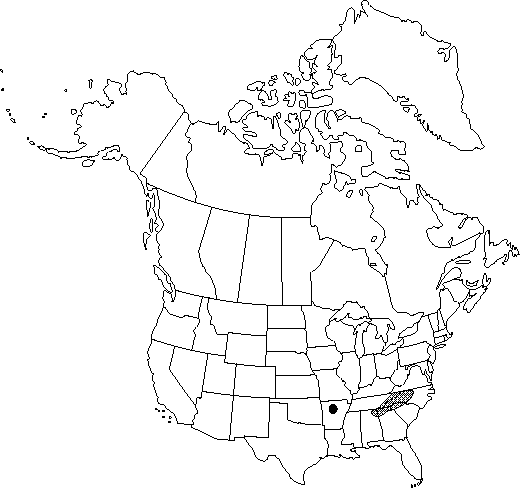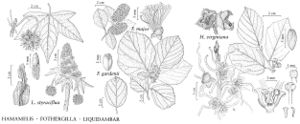Difference between revisions of "Fothergilla major"
Hort. Suburb. Lond. 124. 1818.
(correction to year of publication) |
(Apply previous changes to properties, add basionym change accepted name authority) |
||
| Line 3: | Line 3: | ||
|accepted_authority=(Sims) Sweet | |accepted_authority=(Sims) Sweet | ||
|publications={{Treatment/Publication | |publications={{Treatment/Publication | ||
| − | |title=Hort. Suburb. Lond. | + | |title=Hort. Suburb. Lond. |
|place=124. 1818 | |place=124. 1818 | ||
|year=1818 | |year=1818 | ||
| Line 49: | Line 49: | ||
-->{{#Taxon: | -->{{#Taxon: | ||
name=Fothergilla major | name=Fothergilla major | ||
| − | |authority= | + | |authority=(Sims) Sweet |
|rank=species | |rank=species | ||
|parent rank=genus | |parent rank=genus | ||
|synonyms=Fothergilla monticola | |synonyms=Fothergilla monticola | ||
| − | |basionyms= | + | |basionyms=Fothergilla alnifolia var. major |
|family=Hamamelidaceae | |family=Hamamelidaceae | ||
|phenology=Flowering spring (Apr–May). | |phenology=Flowering spring (Apr–May). | ||
| Line 60: | Line 60: | ||
|distribution=Ala.;Ark.;Ga.;N.C.;S.C.;Tenn. | |distribution=Ala.;Ark.;Ga.;N.C.;S.C.;Tenn. | ||
|reference=None | |reference=None | ||
| − | |publication title= | + | |publication title=Hort. Suburb. Lond. |
| − | |publication year= | + | |publication year=1818 |
|special status=Endemic;Illustrated | |special status=Endemic;Illustrated | ||
|source xml=https://bitbucket.org/aafc-mbb/fna-data-curation/src/2e0870ddd59836b60bcf96646a41e87ea5a5943a/coarse_grained_fna_xml/V3/V3_605.xml | |source xml=https://bitbucket.org/aafc-mbb/fna-data-curation/src/2e0870ddd59836b60bcf96646a41e87ea5a5943a/coarse_grained_fna_xml/V3/V3_605.xml | ||
Revision as of 15:54, 7 January 2021
Shrubs, 7-65 dm; branches robust. Leaves: stipules 2.8-7(-10.2) mm; petioles 3-10(-18) mm. Leaf blade broadly elliptic or somewhat orbiculate to obovate, asymmetric, 2.5-13.5 × 4.2-12.5 cm, base rounded to truncate, rarely cuneate, often oblique, proximal margins entire, distal margins coarsely sinuate to repand, rarely entire, apex short-acuminate to rounded and mucronate; surfaces abaxially glaucous or green, adaxially green, both surfaces stellate-pubescent or nearly glabrous; veins (4-)5-6(-7) pairs. Inflorescences nearly sessile to short-pedunculate, 3-6 × 2-3 cm. Flowers: calyx lobes persistent in fruit; stamens (10-)22-34; filaments 6-17 mm. Fruiting spikes 3.5-7 × 1.5-2.5 cm. Capsules 5.5-13 mm. Seeds 5-6(-8) mm, apex pointed. 2n = 72.
Phenology: Flowering spring (Apr–May).
Habitat: Bluffs, dry rocky woodlands, talus slopes, riverbanks, upper piedmont to mountains
Elevation: 150-1300 m
Distribution

Ala., Ark., Ga., N.C., S.C., Tenn.
Discussion
The disjunct occurrence of Fothergilla major in Arkansas is a recent discovery.
Selected References
None.
